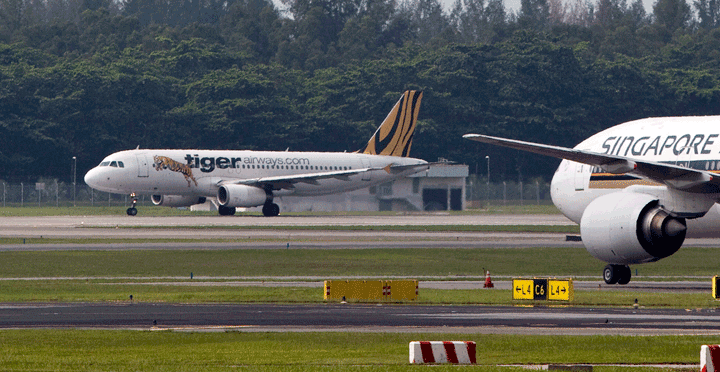
Singapore’s Changi Airport
is something of a mystery. Widely acknowledged as one of the world’s
leading airports, a wander around its calming terminals reveals facilities
designed to within an inch of perfection.
Unlike most global hubs, it is rare to even
see queues. A seat is always easy to find and the staff is polite, helpful,
and well-trained.
The Swiss may keep things ticking, but judging
by Changi, Singapore has taken efficient reliability into the digital
age. The entire experience is a pleasure rather than a chore.
And Singapore has reaped the benefits of
its excellence, handling 53.7 million passengers last year compared to
just 42 million in 2010.
 |
But there is one fly in Changi’s almost
flawless ointment—cargo. To quote a famous Depeche Mode song, the
awarding winning airport simply ‘just can’t get enough.’
Over the last decade annual freight tonnage has shown almost no growth
even as many of its regional and global rivals have racked up major gains
as Asia has flexed its economic muscles.
This year most of Asia’s leading freight
hubs have seen throughput expand rapidly, but Changi has again disappointed,
with volumes in the first eight months of the year increasing just 0.7
percent to 1.22 million tons.
In a bid to unravel the Changi conundrum,
FlyingTypers caught up with Steven Lee, chairman of the Singapore
Aircargo Agents Association.
FlyingTypers: Why
is Singapore not benefitting from the resurgence of Asia’s air freight
industry this year?
Steven Lee: It
is partly due to the rising cost of operations. Manufacturers have a challenge
in securing bids to manufacture certain products as they need to compete
with developing countries. Singapore’s focus is to be a smart nation
by concentrating on improving productivity. This means that manufacturers
are trying to produce more high end products. Also, cargo flown as airfreight
is more compact and lighter, which also doesn’t help volumes.
FT: Do
you believe Singapore is still competitive on price?
SL: Yes,
but unfortunately as mentioned earlier, the escalating operational costs
are the hindrance.
FT: How is the lack
of volume growth impacting your members?
SL: Most
of our members are impacted by the lack of volume but due to the reduction
of space the yield is still sustainable on certain routes. Some members
also focus on niches. For example, oil and energy, pharmaceuticals etc.
FT: Are you offering
members advice to help them cope with this sustained period of under-performance
at Changi?
SL: Agents
must be prepared to get automated and take every advantage of new technology
to increase productivity to reduce cost. One of the areas is through the
faster adoption of E Freight.
FT: How has Singapore’s
air cargo community been affected by cuts in capacity by SIA?
SL: The impact
is not great as there are new freighter services, for example, from ANA
and Hong Kong Airlines.
FT: How have the incentives
provided by CAG for freight, such as landing fees and rental rebates,
helped the freight sector over the last year?
SL: The incentives
have helped and most initiatives have been fulfilled.
 FT: Are you hopeful
we’ll see a traditional peak season later in the year?
FT: Are you hopeful
we’ll see a traditional peak season later in the year?
SL: Yes,
it goes without saying, the year-end peak is the only avenue to make up
for any shortfalls.
FT: Are Changi airport
and operators based in Singapore suffering from competition from the Middle
East?
SL: I think
we are reaching the same level field of play. The threats will continue,
but in my opinion we are still ahead of the Middle East.
SkyKing
(Editor’s Note: Here’s one for all the Mr. Lees. But word
of warning—if you listen to this tune it will rattle around inside
your head all day long! |





